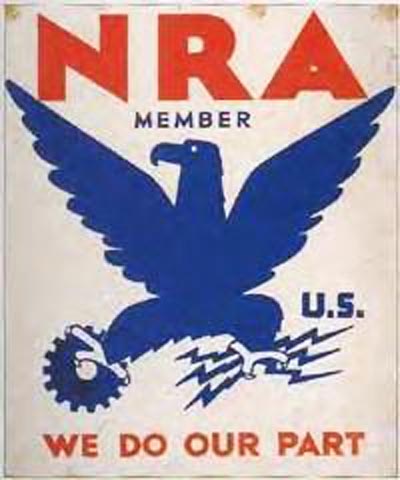|
The
National Recovery Administration (NRA) was the primary New Deal agency
established by U.S. president Franklin D. Roosevelt
(FDR) in 1933. The goal was to eliminate "cut-throat competition" by
bringing industry, labor and government together to create codes of
"fair practices" and set prices. The NRA was created by the National Industrial Recovery Act
(NIRA) and allowed industries to get together and write "codes of fair
competition." The codes were intended to reduce "destructive
competition" and to help workers by setting minimum wages and maximum
weekly hours, as well as minimum prices at which products could be sold.
The NRA also had a two-year renewal charter and was set to expire in
June 1935 if not renewed.[1]
In 1935, the U.S. Supreme Court
unanimously declared that the NRA law was unconstitutional, ruling that
it infringed the separation of powers under the
United States Constitution. The NRA quickly stopped
operations, but many of its labor provisions reappeared in the National Labor Relations Act
(Wagner Act), passed later the same year. The long-term result was a
surge in the growth and power of unions, which
became a core of the New Deal Coalition
that dominated national politics for the next three decades.
The NRA, symbolized by the
Blue Eagle, was
popular with workers. Businesses that supported the NRA put the symbol
in their shop windows and on their packages, though they did not always
go along with the regulations entailed. Though membership to the NRA was
voluntary, businesses that did not display the eagle were very often
boycotted, making
it seem mandatory for survival to many.
|

